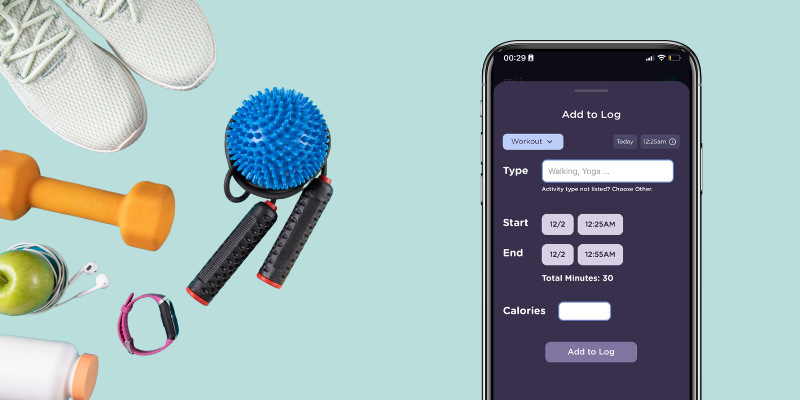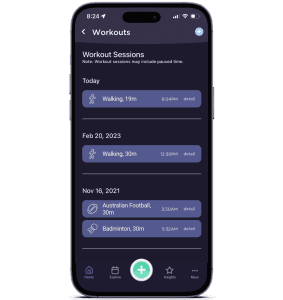Headaches and Exercise: What Does the Research Say?
The research on exercise and headaches is a bit limited. But, some good studies exist.

Exercise may help prevent migraines.
In one study, regular exercise reduced migraines. One randomized controlled trial of 91 patients compared exercising for 40 minutes three times a week, relaxation, and daily topiramate use.
Result: Each method was effective. No significant difference was observed between the groups. The study concluded that – “Exercise may be an option for the prophylactic treatment of migraine in patients who do not benefit from or do not want to take daily medication.”
Study: “Exercise as migraine prophylaxis: a randomized study using relaxation and topiramate as controls.”
In one study, low exercise was associated with a 60% higher risk of developing a migraine. A large population study, including 3,124 subjects (43% women) were interviewed with the purpose of identifying potential lifestyle factors associated with the risk of developing migraine.
Result: In analysis, low physical exercise (i.e., <30 min of physical exercise per week) was associated with a 60% higher risk of developing migraine. Notably, in this study, this association was found to be statistically significant in women but not in men. Other studies have shown an association in both women and men.
Study: Physical exercise and migraine: for or against?
Another study showed that regular exercise reduced migraines and improved quality of life overall. Interesting findings emerged from a recent intervention study in which 52 migraine patients were equally randomized into an exercise group (i.e., 45 min of aerobic exercise 3 times weekly for 3 months) and a control group (i.e., usual daily activities, no aerobic physical exercise).
Result: After the end of the study and during 6 months of follow-up, the aerobic exercise group displayed a substantial improvement of all the main migraine features. Examples cited include a reduction of days with migraine (−23% versus both pre-exercise and control group), pain intensity (−16% versus pre-exercise and −8% versus control group) and pain duration (−28% versus pre-exercise, no difference with control group). The quality of life of the exercise group was substantially improved: increase in the time spent on household chores (+32%), paid work or study tasks (+46%), social activities (+31%), family life (+33%), and physical exercise (+17%).
Study: ATM Article
Exercise could cause migraines. But, the evidence is unclear.
In one study, people reported exercise as a trigger. Yet, the researchers didn’t find that to be supported in the clinical research.
From the study: “Surveys have suggested between 22% and 38% of patients report a lifetime history of at least one exercise-triggered migraine attack.” To be clear, this is people reporting it as a trigger.
Also from the study: “… no association between objectively measured daily physical activity and how often physical activity was cited as an exacerbating factor in migraine attacks during a 4-week diary assessment.” To be clear, this is the researchers not seeing it when doing an analysis of migraine logs. This is only one study and we’re not convinced that the method of recording daily activity included non-migraine days. So, further analysis of their methods could shed some light on why the association seems to be missing. Read the article for full information.
Conclusion: More research is needed.
Study: Aerobic Exercise for Reducing Migraine Burden: Mechanisms, Markers, and Models of Change Processes
Can exercise end a migraine?
What about gentle exercise to abort a migraine? This question comes up a lot as we talk to a lot of people living with migraine. The theory is that blood flow or stretching can loosen up your muscles and help end a migraine. We searched high and low but couldn’t turn up any studies that have looked at exercise as an abortive treatment for headaches or migraines.
But, if you’re thinking of doing some gentle aerobic exercise to end a migraine – as painful as that sounds – it’s been reported to work for some of our app users. Honestly, we haven’t been brave enough to try it yet.
We work with researchers and are encouraging them to do studies on this subject. We will keep you posted.
What are the Migraine Insight app users saying?
“I found that yoga is a trigger for me. I have location tracking turned on in the app and I track yoga sessions as a workout. Turns out, I had more migraines after both the yoga sessions and the places where I took yoga classes. That’s a lot of indicators pointing at yoga.
After learning that, I set up tracking for different yoga poses. And, GOOD NEWS – it’s just the inversions that cause next-day migraines for me. Is this from neck compression or next day inflammation? I don’t know. But, at least if I know the cause (inversions, headstands). I can avoid them.
The app helped me get to a much better understanding that I can do yoga – I just need to avoid doing headstands or too much downward dog. This is a big help for me. I love yoga. Now I know what I can do to avoid having a migraine the next day.”
– Beth Gibbons, Migraine Insight User
“I was sure running was making more more sick. I tracked it, and yes. Which, is sad. But, I can do the elliptical machine and don’t get more migraines after. So, at least now I know. Probably the outdoor running has pavement or something else that factors in. I’m just glad to know which exercise is safe to do.”
– Ted Lamers, Migraine Insight User
What We’ve Learned: Exercise Tracked in Migraine Insight
TABLE: Migraine Insight – Top Factors (suspected triggers) Tracked
| Factor | Percent of users tracking this factor | Result: Percent of users tracking this factor with a high correlation result |
| Chocolate | 46% | 83% |
| Cheese | 39% | 79% |
| Coffee | 63% | 74% |
| Tea | 47% | 74% |
| Exercise | 23% | 21% |
Download the app to learn more about top triggers for people with your diagnosis and profile.
Knowing how working out affects your migraines can be a big part of finally finding your real migraine triggers
Migraine Insight: Track workouts
See if workouts are a factor in causing or preventing your attacks. To find your workout sessions in the app, go to the home tab and Your Logs.
After tracking any type of workout for 5 or more sessions, go to Your Results tab and see how it correlates to your episodes.

How does exercise affect your headaches?
Migraine Insight’s Workout Tracker
See if workouts are a factor in causing or preventing your attacks. To find your workout sessions in the app, go to the home tab and Your Logs.
After tracking any type of workout for 5 or more sessions, go to Your Results tab and see how it correlates to your episodes.

As always, the information provided in our blog is for educational purposes only. No health blog is a substitute for professional medical advice.



